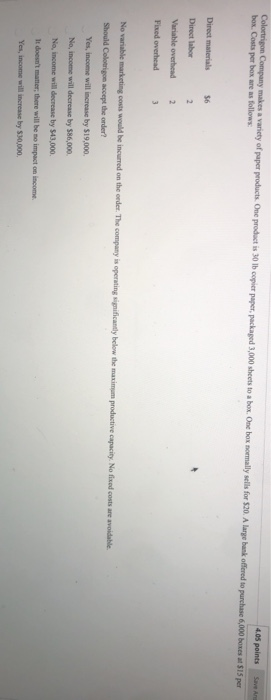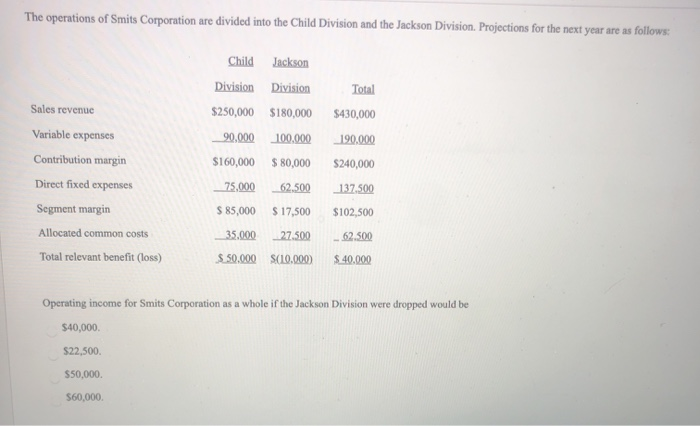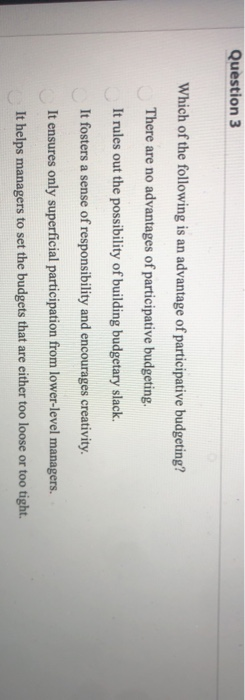
please answer all 4 multiple choice questions pictured , please and thank you
4.05 points Savena Colortrigon Company makes a variety of paper products. One product is 30 lb copier paper, packaged 3,000 sheets to a box One box omally wells for 500. A large bunk offered to purchase 6,000 boxes at 515 per box. Costs per box are as follows $6 Direct materials Direct labor 2 Variable overhead Fixed overhead 3 No vanable marketing costs would be incurred on the order. The company is operating gificantly below the maximum productive capacity. No fixed costs are avande Should Colorigo accept the order? Yes, income will increase by $19,000 No, income will decrease by 586,000 No, income will decrease by 543,000 It doesn't matter, there will be o impact on income Yes, income will increase by $30,000 The operations of Smits Corporation are divided into the Child Division and the Jackson Division Projections for the next year are as follows: Child Jackson Division Division Total Sales revenue $250,000 $180,000 $430,000 Variable expenses 190,000 90,000 $160,000 100.000 $80,000 Contribution margin S240,000 Direct fixed expenses Segment margin _75,000 $ 85,000 _35.000 $ 50,000 62.500 $17,500 27.500 $(10,000) 137.500 $102,500 - 62.500 $40,000 Allocated common costs Total relevant benefit (loss) Operating income for Smits Corporation as a whole if the Jackson Division were dropped would be $40,000 $22,500. $50,000. 560,000 Question 3 Which of the following is an advantage of participative budgeting? There are no advantages of participative budgeting, It rules out the possibility of building budgetary slack. It fosters a sense of responsibility and encourages creativity. It ensures only superficial participation from lower-level managers. It helps managers to set the budgets that are either too loose or too tight. Which of the following is true of budgetary slack Budgetary slack occurs when a manager deliberately underestimates revenues or overestimates costs in order to make budgeted expectations more casily achievable in the future Budgetary slack occurs when top management has total control of the budgeting process, allowing only superficial participation from lower-level managers It occurs when top management simply obtains formal acceptance of the budget from subordinate managers without seeking real input It reflects operating realities such as actual level of activity, seasonal variations, and general economie trends. None of these



 please answer all 4 multiple choice questions pictured , please and thank you
please answer all 4 multiple choice questions pictured , please and thank you





